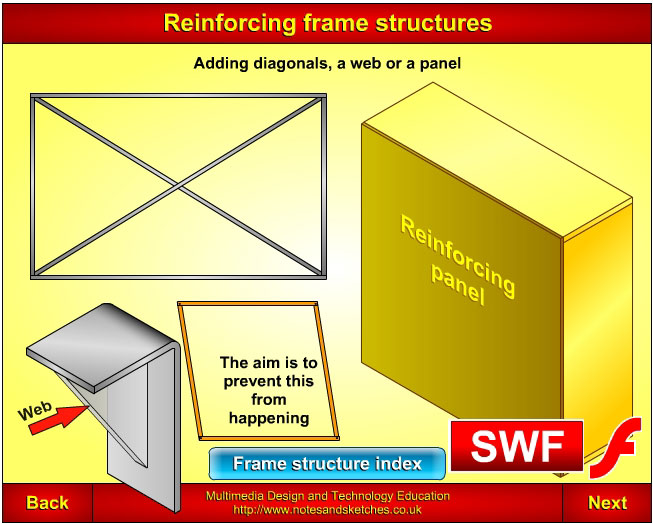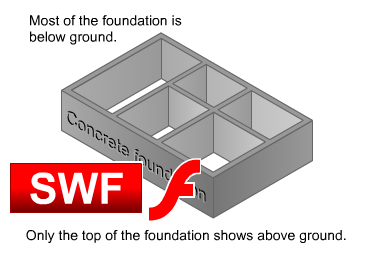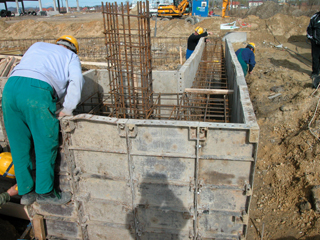 Click on the screenshot above to view the "Reinforcement" animation by Laszlo Lipot |
|||
|
|||
Support and Reinforcement of Structures |
|||
SupportSome structures float on water, e.g. houseboats and ships, some structures fly, e.g. planes and rockets but most structures rest on the ground. The ground is rarely hard enough or stable enough to support large structures without extra support and reinforcement. The reinforcement under a building is called a foundation. All large buildings and other heavy structures rest on "foundations". Foundations are nearly always made of steel reinforced concrete. Foundations for smaller buildings, e.g. houses, simply consist of a solid ring of steel reinforced concrete that also has divisions where load bearing walls will be built.
|
 |
||
Steel reinforced concrete foundations |
|||
 |
 |
||
The shuttering and steel reinforcing bars being positioned ready for concrete to be poured into the mould. |
|||
When foundations are being made, concrete is poured in one go so that the outer ring and internal divisions will be one solid block of concrete. This is so that if there is any ground movement, the foundations will move as a whole block carrying the building resting on it without damage. The only time that a building may be damaged by ground movement, (apart from earth tremors that shake a building) is when the foundation breaks and then two or more parts move in different directions or different amounts. Even minute movement of broken foundations will result in cracks in a brick building resting on them. The photographs above show how a steel reinforced concrete ring has already been cast but because there is a lot of ground movement in the area, (high water table) a second steel reinforced concrete ring will be cast on top of the first. This will make an exceptionally strong base for the building that will rest on it. Reinforcement
|
|||
 |